The SAMSUNG S90D, also known as the S94D, is a device that has repeatedly pleasantly surprised us during our tests. It is worth mentioning that depending on the chosen size, the differences may concern the OLED panel used. However, regardless of which variant we encounter, one can count on excellent black levels and HDR effects, which, thanks to high brightness, make a huge impression. This is one of those TVs that really can elevate home viewing to a cinematic level. While testing films and series, we immediately noticed the great colour reproduction and depth of black. Dark scenes, which can be problematic on other screens, are full of detail and immersive here. Although the factory colour settings could be a bit better, after calibration the picture gained clarity, and the television showed what it is truly capable of. In terms of everyday use, we noticed that the wide viewing angles allow comfortable viewing even from less central positions. The Tizen operating system appealed to us – it is clear, fast, and offers access to the most popular applications. AirPlay works flawlessly, which was a nice addition during our tests. And what about picture fluidity?... The 144 Hz panel performs excellently. While watching sports, the image was smooth, with no hint of motion blur. Matches and races felt as if we were really in the stands. We also couldn't overlook the gaming tests. Low input lag and HDMI 2.1 support make the S90D/S94D an excellent choice for gamers. Games ran smoothly, and every movement was displayed with incredible precision. This is equipment that meets the expectations of even the more demanding console users. The SAMSUNG S90D/S94D is a television that combines excellent picture quality with modern features and versatility. Whether we are watching films, playing on a console, or simply using applications, this model impresses. In its price range, it is truly a strong contender.
- Matching (Score)
- Our verdict
- TV appearance
- Where to buy
- Contrast and black detail
- HDR effect quality
- Factory color reproduction
- Color reproduction after calibration
- Smoothness of tonal transitions
- Image scaling and smoothness of tonal transitions
- Blur and motion smoothness
- Console compatibility and gaming features
- Input lag
- Compatibility with PC
- Viewing angles
- TV efficiency during daytime
- Details about the matrix
- TV features
- Apps
- Playing files from USB
- Sound
Samsung OLED S90D / S94D (WRGB OLED) vs LG OLED G5
Direct compare
S90DAE / S94DAE
G54 / G51 / G55 / LW / LS


Panel type: WRGB OLED
Resolution: 3840x2160
System: Tizen
Model year: 2024
Complete the survey to find out the result

Panel type: WRGB OLED
Resolution: 3840x2160
System: WebOS
Model year: 2025
Complete the survey to find out the result

Overall rating
8.1
8.9
Movies and series in UHD quality
8.2
9.2
Classic TV, YouTube
8.7
9.2
Sports broadcasts (TV and apps)
8.5
9.0
Gaming on console
9.5
9.6
TV as a computer monitor
8.6
8.8
Watching in bright light
6.0
8.0
Utility functions
7.4
8.5
Apps
8.7
9.1
Sound quality
7.4
8.7
Complete the survey to find out what fits your preferences
Advantages
Ideal contrast
Great for 4K content
Excellent for gamers - 144hz, HDMI 2.1, low input lag.
Decent brightness
Advanced and smooth Tizen system
Amazing black and contrast
Reference colour reproduction after calibration
Very high brightness in HDR materials
Excellent collaboration with consoles and computers
Great motion smoothness - OLED panel 165Hz
Many features for gamers: VRR, ALLM, HGIG, low input lag
Great operating system WebOS with many applications
Superb control thanks to the Magic remote with "pointer" function
Disadvantages
The colours from the box need improvement
Missing Dolby Vision (not essential at this brightness but would be appreciated)
No support for DTS audio format
Worse (though still good) viewing angles than its predecessor G4
Different versions of the remote in derivative models – it's hard to predict which version we will get
Our verdict
The LG G5 is a television that not only continues but also enhances what we loved about the previous models in the G series. Instead of following the beaten path, LG opted for a new Tandem OLED panel – and it was a resounding success. Brightness? Simply, PH E N O M E N A L. HDR effect? Close to reference. Colours after calibration? Almost perfect. Motion fluidity, low latency, and features for gamers? At an absolutely top level. The G5 performs well both in films and games, day and night, with a decoder, console, PC, or even just the remote. Of course – it is not a product without flaws. It’s a shame there is no support for DTS, viewing angles have worsened compared to its predecessor, and the remote may vary depending on the version. However, when we look at the overall picture, it is hard not to feel that this is one of the best OLED televisions available on the market, and perhaps the best. Certainly, when it comes to its versatility and image quality without having to reach for the extremely expensive models of the competition. If you are looking for a television for everything – cinema, gaming, bright living rooms, watching online content or connecting a computer – the LG G5 is a device that simply delivers on every front without compromises.
TV appearance







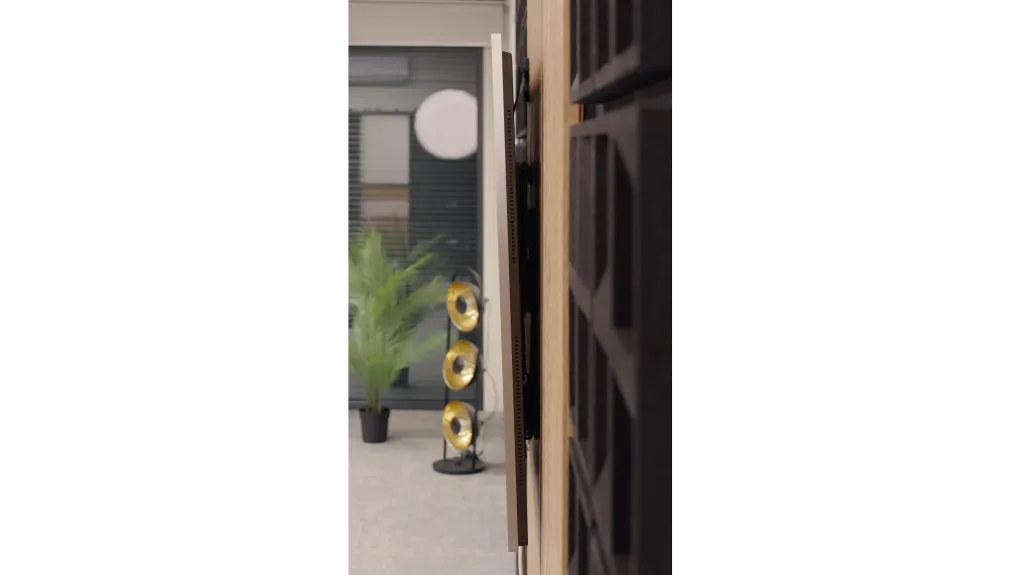
Contrast and black detail
10/10
10/10
Contrast:

Result
∞:1

Result
∞:1

Result
∞:1

Result
∞:1

Result
∞:1

Result
∞:1

Result
∞:1

Result
∞:1

Result
∞:1

Result
∞:1
Halo effect and black detail visibility:

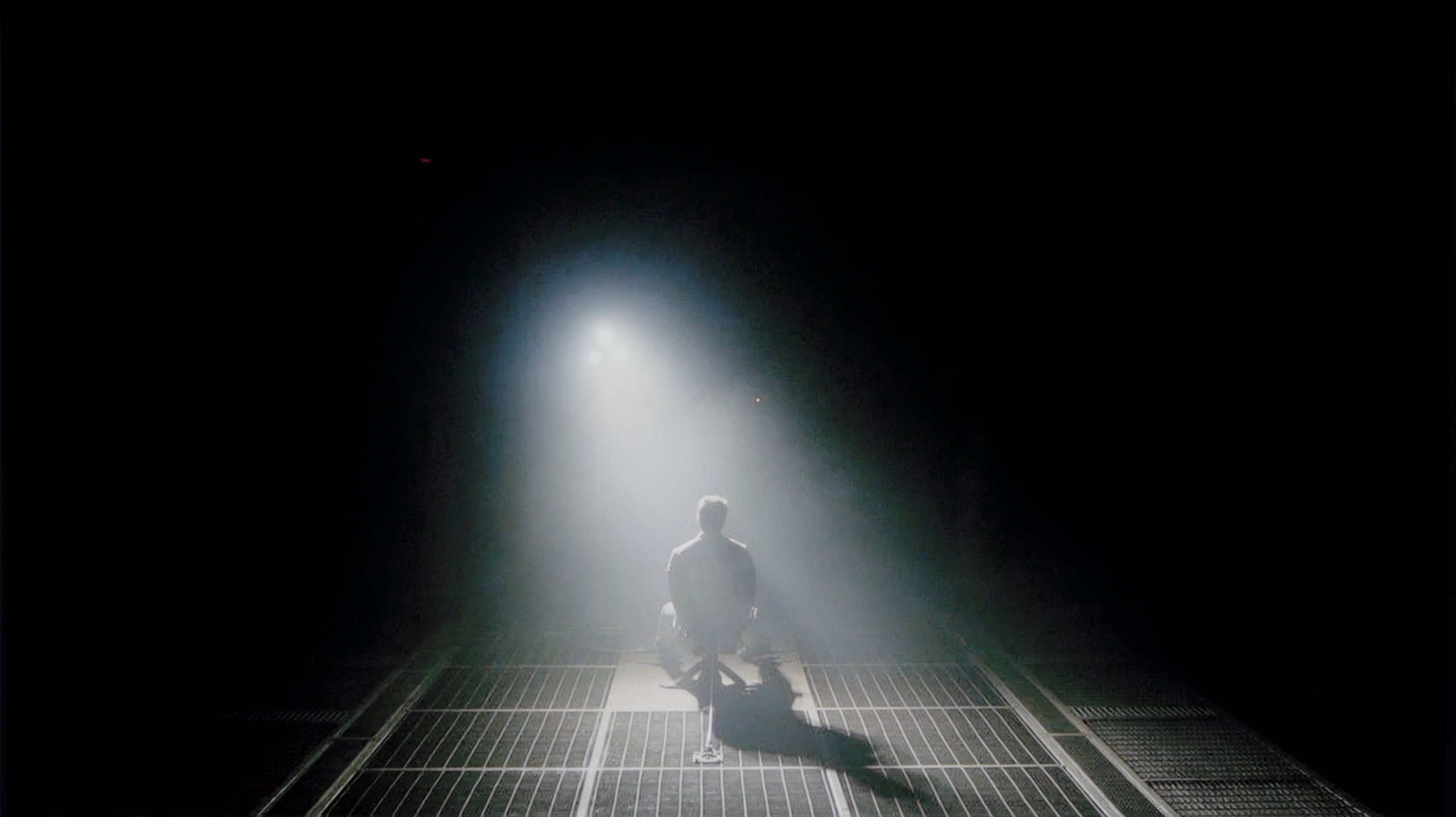
Samsung S90D, thanks to the OLED matrix used, offers infinite contrast, which is one of its greatest advantages. OLED matrices are characterised by the fact that each pixel emits its own light, allowing for deep blacks and excellent detail reproduction in dark scenes. Unlike traditional LCD matrices with backlighting, where black often takes on a grey hue due to uneven backlighting, OLED guarantees that switched-off pixels remain completely black. This allows for achieving a very high level of contrast, making the images more dynamic and realistic. In the scene from "Oblivion," the Samsung S90D brilliantly showcases the high light effect of the lantern, highlighting the intensity and details in the bright parts of the image. Conversely, in the film "Sicario 2," you can clearly see the separation of the helicopter lights from the dark background. A surprising aspect of the S90D model is that Samsung, after years of disputes, decided to use organic matrices manufactured by LG, in versions with "DAE" at the end of the name. Is that a bad thing? No! In terms of contrast, both WOLED and QD-OLED matrices offer the same, which is perfect black.
LG G5, as befits an OLED television, impresses with its quality of contrast and blackness. In scenes with a lot of dark areas, the screen looks almost perfect, offering deep, absolute black and infinite contrast – an effect that still cannot be achieved on any LCD television. The new Tandem OLED panel does not introduce any negative changes compared to previous generations – blacks are flawless regardless of the content. Watching scenes from films like The Revenant or Oblivion, the excellent separation of lights is clearly visible, without any halo effect or brightening of dark areas. In this category, the LG G5 deserves the highest rating.
HDR effect quality
6.9/10
9.1/10
Luminance measurements in HDR:

Result
960 nit

Result
990 nit

Result
1098 nit

Result
1042 nit

Result
490 nit

Result
2346 nit

Result
2353 nit

Result
2399 nit

Result
2353 nit

Result
2012 nit
Scene from the movie “Pan” (about 2800 nits)


Scene from the movie “Billy Lynn” (about 1100 nits)


Static HDR10


Dynamic: HDR10+
Dynamic: Dolby Vision


HDR luminance chart:
LG OLED G5
HDR luminance
Luminance of RGB colors
Samsung OLED S90D / S94D (WRGB OLED)
HDR luminance
Luminance of RGB colors
In the tested film scenes, the television Samsung S90D achieves impressive brightness results, exceeding the 1000 nits barrier in the first four shots, which can be considered an outstanding result. In the case of the last shot, where a full-screen flash of sunlight is visible, the brightness drops to around 500 nits, but still remains at a very good level. Additionally, the television impresses with a DCI-P3 colour gamut coverage measurement of 98%, ensuring an extraordinarily rich and realistic colour reproduction, further enhancing the picture quality. This result makes the Samsung S90D an ideal choice for those expecting high-quality images in a variety of lighting conditions.
LG G5 with the new Tandem OLED matrix brings the biggest change in terms of the brightness of the television. And it's substantial. This is truly an astronomically bright OLED. In every scene tested – whether it was point lights or full-screen whites from the film The Meg – the brightness on the G5 exceeded 2000 nits. Just a year ago, such values on an OLED were simply unimaginable. And here we are – the G5 is approaching, and at times even surpassing, the best Mini-LEDs on the market. A new feature of the Tandem OLED matrix is also the expanded colour gamut – and here the LG G5 performs almost perfectly. DCI-P3 reaches a full 100%, and BT.2020 is maintained at around 83%. These are some of the highest values currently available on the market – it's hard to find any other television that comes close to such results, unless we are talking about the best displays with QD-OLED panels. The G5 has nearly reference-quality HDR – both in terms of brightness and colour saturation. This is an OLED that can truly shine – and not just figuratively.
Factory color reproduction
7/10
7.8/10


Factory Mode
After calibration


Factory Mode
After calibration
The S90D television has been tested in Filmmaker mode, which offers good colour reproduction, although with some imperfections that may be noticeable to more discerning users. This mode may seem a bit too warm, and users who switched from Standard mode may experience a slight shock. It is worth noting that this situation is caused by poor settings, such as in the white balance, rather than the Filmmaker mode itself. In both SDR and HDR content, the device exhibits drops in blue colour, making colours warmer than they should be. In practice, this means that some shades, such as sky blue or skin tones, may appear less natural and more tinged with pink or yellow. The Colour Checker test confirms these deviations, showing shifts towards warmer tones. In SDR content, the gamma graph indicates slight fluctuations, resulting in a minimally darker image, especially in shadows. This can affect less defined details in darker scenes. Conversely, in 4K HDR materials, the EOTF curve is above the recommended line, leading to overly bright displays in certain parts of the image, which can cause clipping in the brightest areas. Overall, Samsung S90D presents a solid picture right out of the box, but for the best effects, especially with more demanding content, additional calibration is recommended.
Our test unit, the LG G5, struggled with certain issues in the factory Filmmaker mode. And although most people might have found the picture acceptable, we knew that this television was capable of much more. This mode had a clear excess of blue tint in the white balance, resulting in a significantly cooled image – particularly in HDR modes, where there was additionally a lack of red. The picture appeared cold, and its sharpness was artificially boosted and unnatural. Another significant issue was the brightness characteristics. In SDR content, the situation wasn't the worst, aside from a slight dimming of the entire image. However, it performed much worse in HDR materials – due to improper brightness management, the smallest details could completely disappear from the image, while larger, bright elements looked overexposed and lacking in gradation. Fortunately, the G5 supports calibration using 3D LUT (a tool for professionals for colour calibration), so we decided to make use of its professional capabilities and see what it could really do. Because although it wasn't tragic even before calibration, the potential of this television definitely deserved more.
Color reproduction after calibration
8.7/10
9.8/10




After calibration, the Samsung S90D television in movie mode looks even better than one might have expected. The white balance, for both HD and 4K HDR content, has been improved almost to perfection. Although minor flaws can still be noticed, they are minimal enough not to significantly affect the picture quality. The colours are more balanced, which translates to a natural reproduction of details, especially in scenes requiring a precise colour palette. It is worth noting that this model in this size is equipped with a WOLED panel, which has less coverage of the wide colour gamut and does not offer as rich colours as, for example, the 65-inch version, which is equipped with a QD-OLED panel.
Contrast has also seen significant improvement. The gamma graph post-calibration is much closer to the expected line, providing better balance between bright and dark areas of the image. The EOTF curve, which prior to calibration showed issues with overexposed scenes, now presents better results. This effect allows for greater detail retention in bright parts of the image, especially in HDR materials.
After performing the calibration process using professional tools, we can confidently state that the LG G5 offers nearly reference-quality image. Most of the errors related to white balance and the ColorChecker test are below a value of 2, which is a phenomenal result, practically imperceptible to the human eye. And while one could still nitpick that in HDR films the television still has a tendency to slightly dim the smallest elements of the image, in practice this does not negatively affect the overall impression. Kudos to LG, as once again they provide the user with enormous possibilities for adjusting their display – and this, combined with the very good parameters of the panel itself, results in an image that is truly hard to beat.
Smoothness of tonal transitions
7.6/10
8.5/10












The fluidity of tonal transitions on the Samsung S90D television is at a good level, although subtle imperfections are noticeable in places. In most scenes, tonal transitions are smooth and well-reproduced, providing a natural image viewing experience. In more demanding sequences, such as dark coloured skies, slight issues can occur; however, they do not significantly affect the overall visual experience. In the test scene with dominant red hues, one can notice slight cutoffs in the brighter areas, but they are subtle enough not to hinder viewing. Overall, the fluidity of tonal transitions on the Samsung S90D television scores well, ensuring a good reception of content.
The fluidity of tonal transitions in the LG G5 is a notable step forward compared to last year's model. Not only has brightness been improved, but also the method of blending colours, which the G4 sometimes struggled with. In the vast majority of scenes, the G5 has no issues with tonal transitions – there is no visible banding typical of WOLED technology, nor are there unsightly breaks between colours. Of course, in very dark areas of the image and with shades of grey, minor imperfections can still be noticed, but these are things that the average viewer would not even register. In short – it is really good.
Image scaling and smoothness of tonal transitions
7.9/10
8.7/10
Smooth transition function

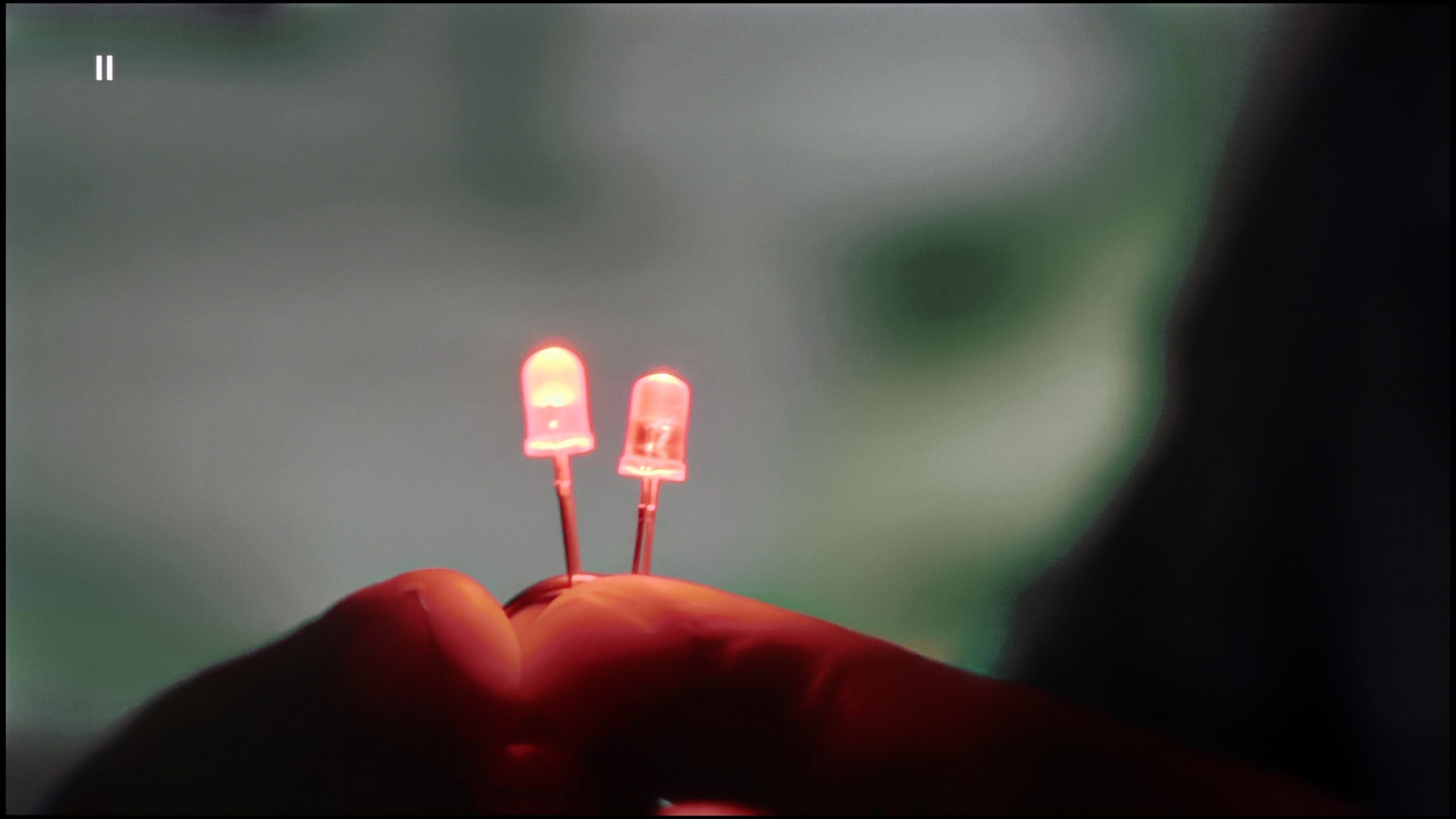
Image without overscan on the SD signal


Television S90D performs very well at smoothing tonal transitions. Thanks to the applied technology, the transitions between colours are more fluid and natural. There is also the option to use noise reduction, which further smooths tonal transitions, which can be useful in certain situations. However, it is worth remembering that enabling noise reduction can also lead to the smoothing of desirable film grain, which in turn could reduce the cinematic atmosphere of the image. For this reason, caution is advised when using this feature, as it is better to leave the natural grain that adds character and authenticity to the viewed content.
Samsung, as always, does not disappoint and excels in the area of scaling images from lower resolutions. The S90D Samsung television effectively processes lower resolutions, as can be seen in the visible image. The outline of the model is clear and accurate and, as a result, looks natural and detailed. Moreover, the branches of the trees are well-rendered, showing no significant jaggedness, which could diminish the image quality. Thanks to effective scaling, even materials in lower resolution present attractively on the screen, pleasing users who prefer various sources of content such as regular antenna/cable television.
Upscaling and digital image processing in the LG G5 are quite impressive. The television handles lower quality content very well, especially when the "Smooth Gradation" feature is set to a low level. In this mode, it effectively removes unwanted artifacts and issues with visible tonal transitions. It may also slightly smooth out some desirable details, such as the subtle texture of clothing or skin, but importantly – it does not remove film grain, so it's difficult to speak of a serious compromise here. This is one of those options that is definitely worth enabling.
The G5 also performs well with upscaling, which improves the quality of older materials. The test image with the model looked really solid – slight jaggedness was visible, but that's an effect that cannot be completely avoided. Additionally, there were no problems with overscan, which – contrary to appearances – is not at all obvious, even in 2025.
Blur and motion smoothness
8.5/10
9/10

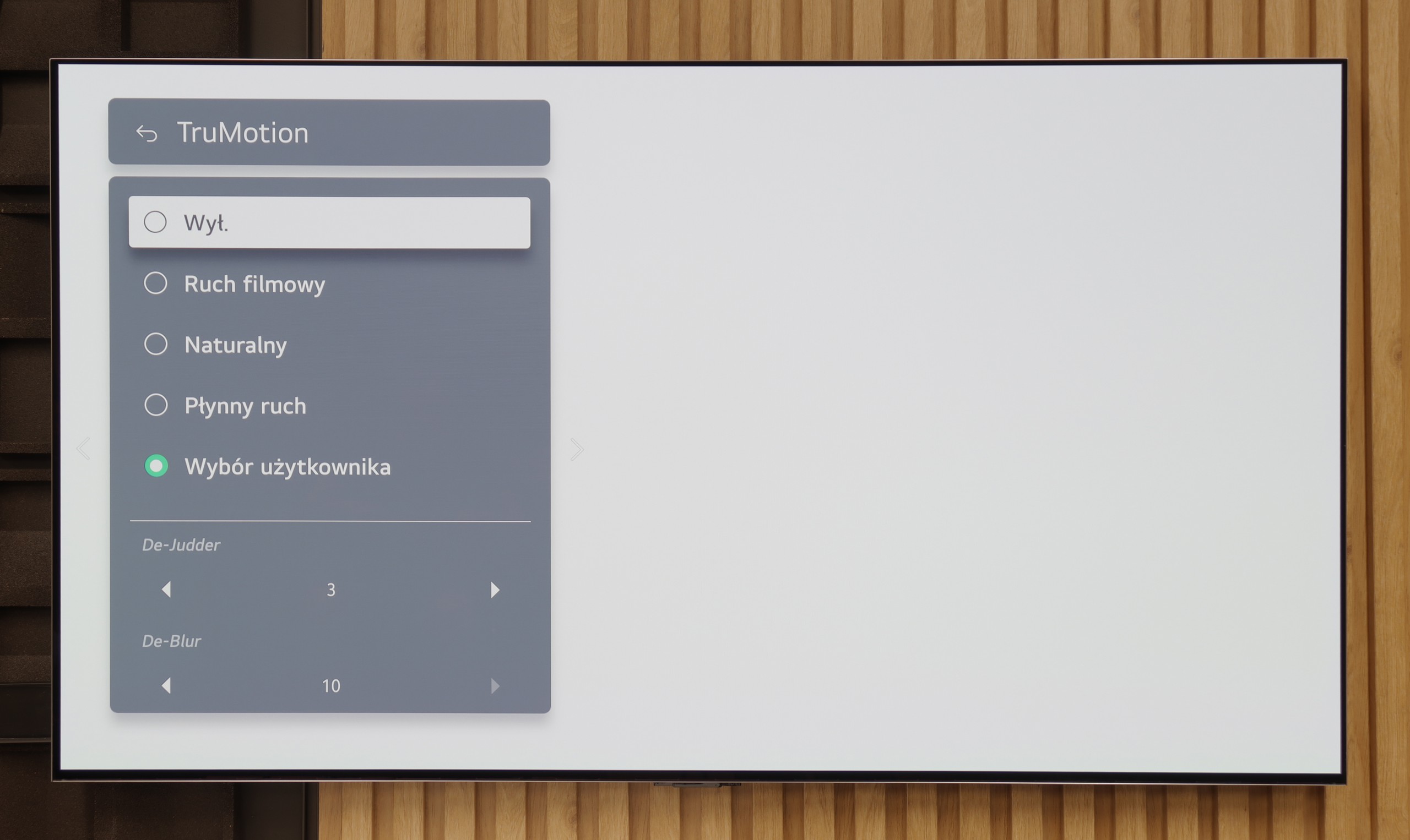
Blur (native resolution, maximum refresh rate):






Blur (BFI function enabled):
Image flickers in this mode
Image flickers in this mode



Smużenie ():
Smużenie (4K 165Hz):



Samsung S90D TV is equipped with a 120 Hz panel, with the possibility of "overclocking" to 144 Hz with the appropriate PC configuration, providing exceptional motion fluidity. Samsung has been offering a variety of sharpness settings on a ten-point scale for years, allowing users to adjust the display to their preferences. In the UFO test, thanks to the use of an OLED panel, there's no sign of any smearing. The pixel response is instantaneous and perfectly captures dynamic movements. In this aspect, OLED technology is considered one of the best on the market. The picture is extremely sharp and detailed, even during fast actions, making the S90D TV an ideal choice for gamers and sports enthusiasts.
The motion smoothness on the LG G5 is simply phenomenal. The television is equipped with a 165 Hz refresh rate panel, and this, combined with the instant response time of the OLED matrix, delivers incredible results. The image does not tear or stutter like on traditional LCD televisions. Like most LG models, the G5 is equipped with a motion smoother, which can be useful when watching films – we are, of course, referring to the TruMotion mode. With the "De-Blur" and "De-Judder" sliders, we can adjust the smoothness of older materials according to our own preferences, whether we want to maintain the characteristic film stuttering or lean towards a more fluid, television-like effect.
Console compatibility and gaming features
9.5/10
10/10
- ALLM
- VRR
- VRR range48 - 144Hz40 - 165Hz
- Dolby Vision Game Mode
- Correct implementation of HGIG
- 1080p@120Hz
- 1440p@120Hz
- 4K@120Hz
- Game bar

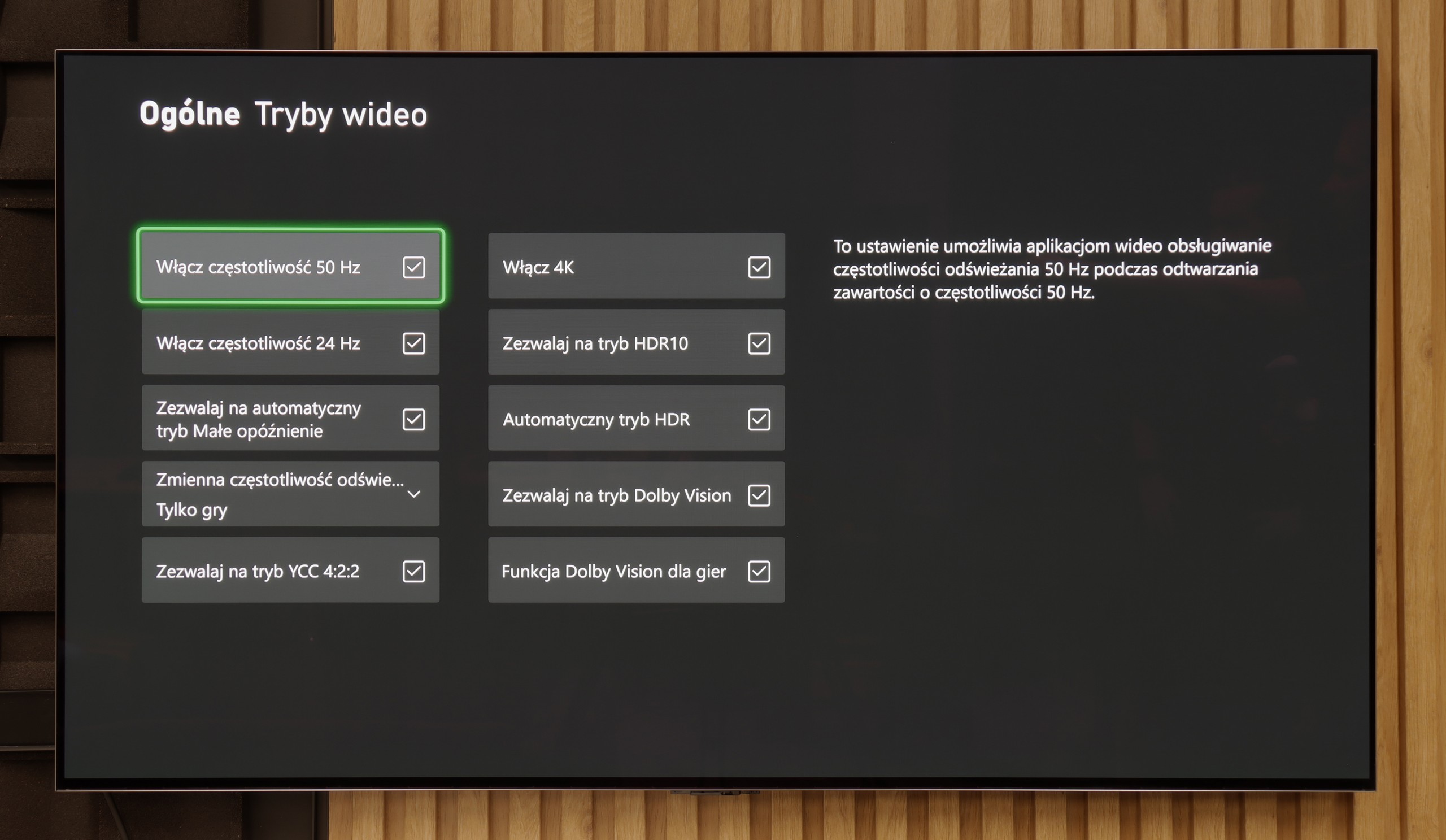

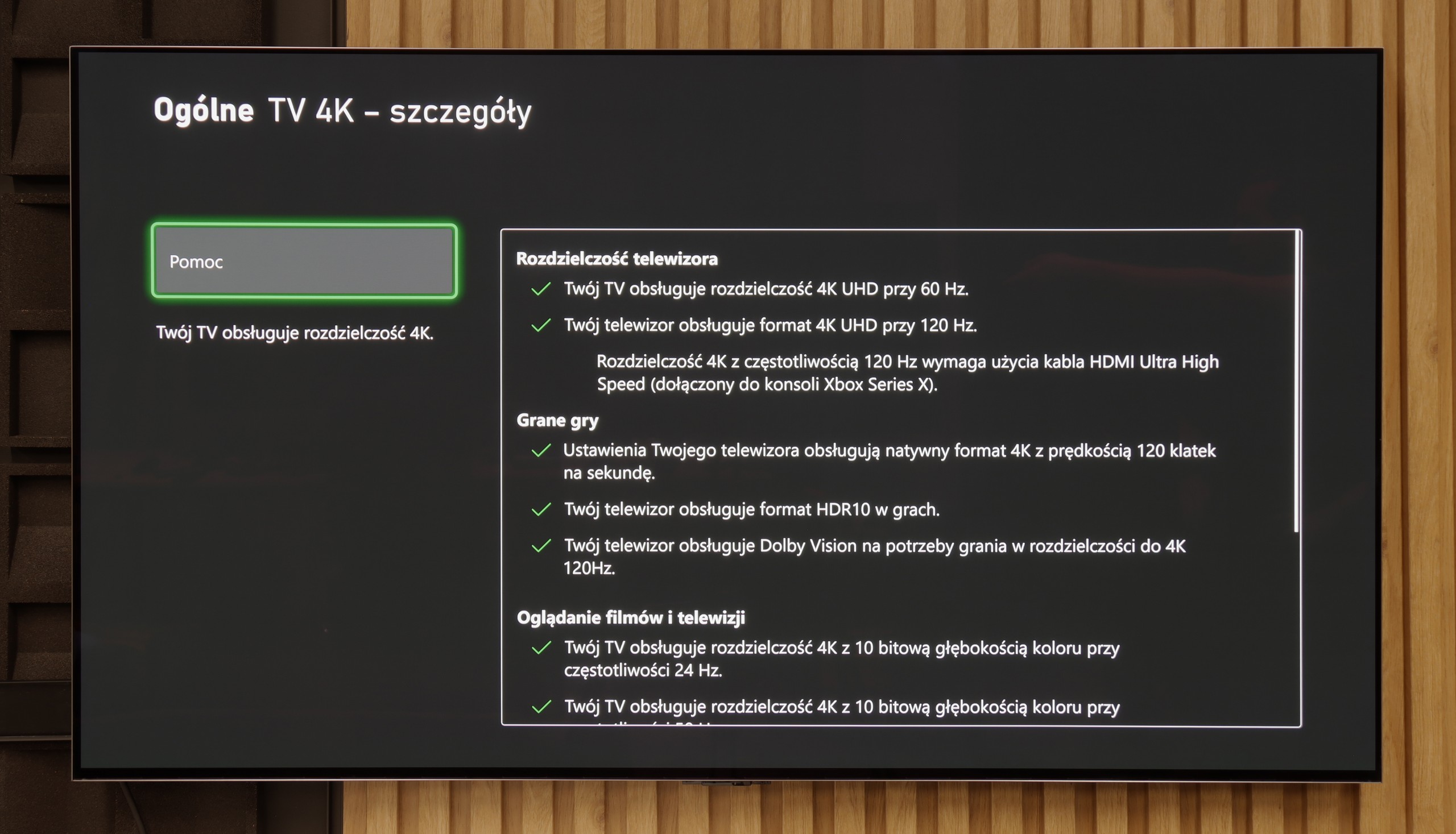

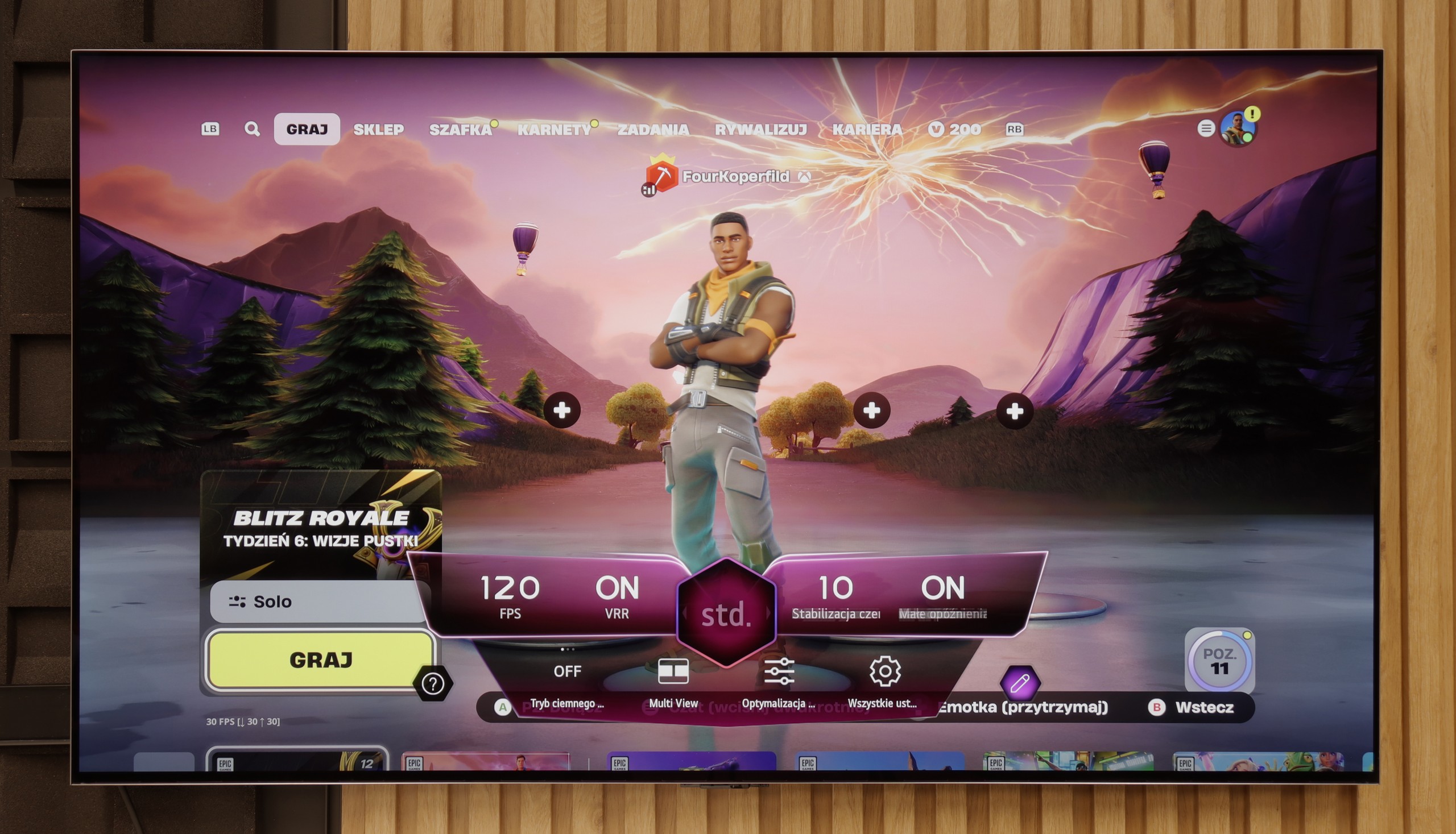

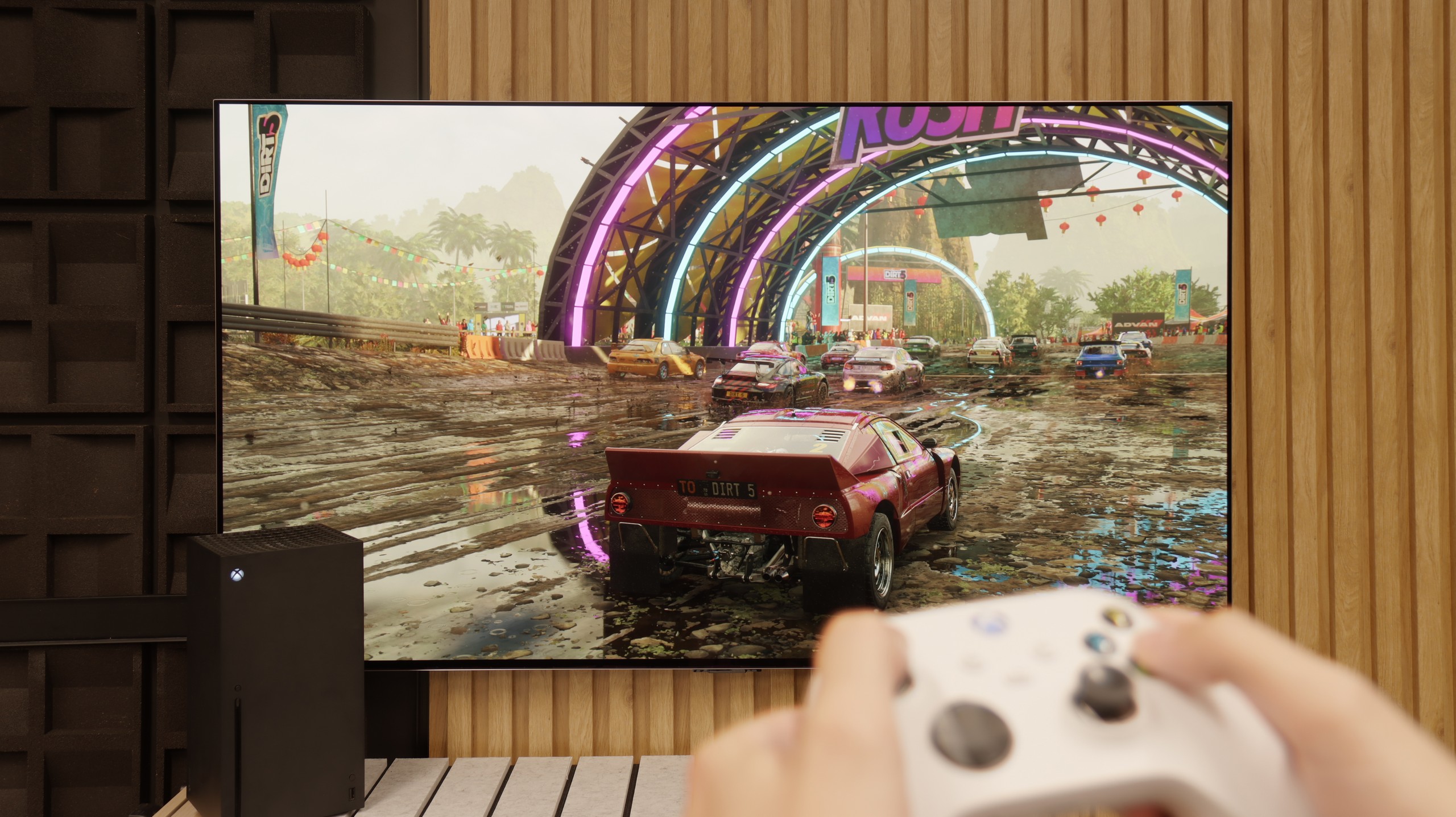
The Samsung S90D TV is perfectly adapted to the needs of gamers, offering four HDMI 2.1 ports that support key features such as Auto Low Latency Mode (ALLM), Variable Refresh Rate (VRR), and HDR Gaming Interest Group (HGIG). With these technologies, gamers can enjoy smoother and more responsive gameplay, significantly affecting comfort and performance during intense gaming sessions. An additional advantage of the television is the special Game Bar, which allows for easy management of game settings. This functionality enables quick adjustments to parameters such as changing the TV's screen aspect ratio, which can be useful in various games and types of gameplay. Users can easily customise their preferences, making the use of the TV during gaming even more convenient and enjoyable. As for PC users, the TV pleasantly surprises. When connected to a computer, the panel is capable of achieving a refresh rate of 144Hz, and users of Nvidia or AMD graphics cards can enjoy features such as G-Sync and FreeSync. It should be noted, however, that the TV does not support Dolby Vision, which may be a drawback - but it's worth bearing in mind that Dolby Vision is not as popular for games as it is for films. Nevertheless, the S90D TV still offers excellent features for gamers, making it a great choice for gaming enthusiasts who seek top-notch picture quality and modern technological solutions.
Features for gamers? Perfect. That should be sufficient for you to know what level we are dealing with here. The G5 is a television designed with gamers in mind, so we will find literally everything you could expect from a gaming screen. There is a Game Bar, there is support for high resolutions with high refresh rates – that is, 4K at 120 Hz, and even more, as the panel has a refresh rate of 165 Hz (which PC gamers will benefit from). The television supports variable refresh rate (VRR), automatic low latency mode (ALLM), and also correctly handles HDR in games thanks to the HGiG function. All of this adds up to one of the best sets of gaming features available on the market. Well done, LG.
Input lag
10/10
9.9/10
SDR
HDR
Dolby Vision
The Samsung S90D OLED features an exceptionally low input lag, regardless of resolution and frame rate, both in SDR and HDR modes. Results around 10 ms are truly impressive and significantly enhance the gaming experience. Such a low input lag ensures instant reactions to on-screen actions, which is crucial in fast-paced games where every millisecond counts. This allows users to enjoy fluidity and precision, making the Samsung S90D a superb choice for those prioritising gaming performance.
The input lag on the LG G5 is incredibly low. The reaction time to our actions – whether we're playing with a controller, keyboard, or mouse – is almost perfect. The controls are instantaneous, and the game responds exactly when we expect it to. The Dolby Vision Gaming mode does introduce slightly higher latencies, but even then it's hard to nitpick – in the worst case, the values hover around 20 ms, which for most gamers will be practically unnoticeable.
Compatibility with PC
8.6/10
8.8/10

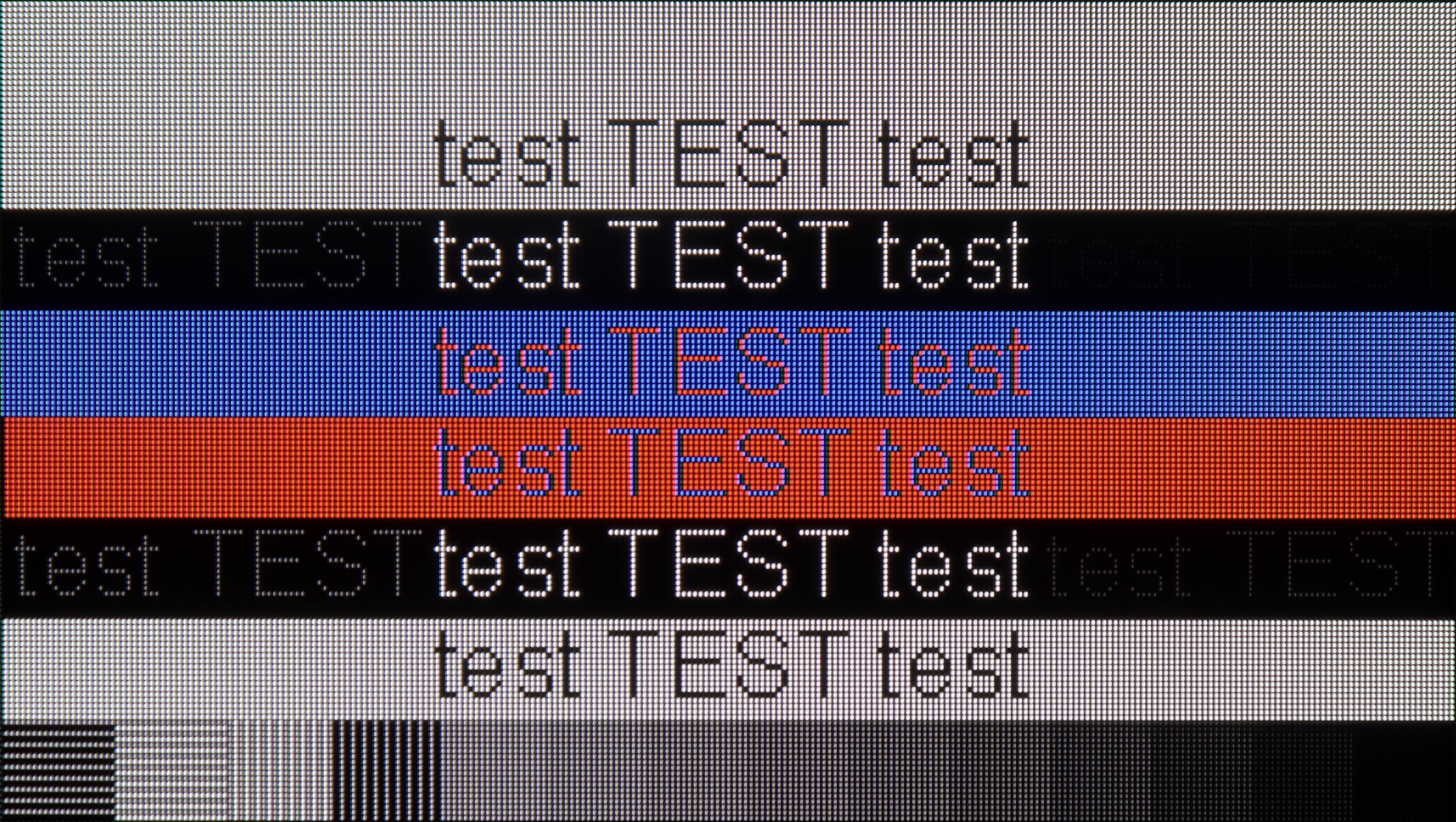
The Samsung S90D television works perfectly with a PC. The fonts are clearly visible, making it easier to read text and use applications. Additionally, it supports chroma 4:4:4 at 4K resolution and a refresh rate of 144 Hz, which ensures full colour reproduction and sharp image quality. It is worth mentioning that the input lag of only 5 ms is extremely advantageous, particularly for gamers and professionals working with graphics. With such low latency, using the television as a monitor becomes a pleasure, allowing for comfortable and responsive work. The Samsung S90D television is an excellent choice for users seeking performance and quality in everyday computer use.
Collaboration with a PC? Nearly perfect. The television, as we mentioned earlier, has fantastic features for gamers – including those using a PC. Onboard, we find full G-Sync certification, a 165 Hz panel, and a super-fast input lag of around 5 ms. Thanks to the correct implementation of chroma 4:4:4, fonts are very easy to read – both the smallest and the largest. Although due to the WRGB subpixel layout, there may be slight shadows around the characters, for most users this effect will be virtually unnoticeable. The G5 excels as a screen for work, entertainment, and gaming – also from a computer.
Viewing angles
7.6/10
7.5/10
The viewing angles on the Samsung S90D television, thanks to OLED technology, are unparalleled. OLED offers excellent colour and contrast reproduction, even at wide viewing angles, ensuring that the image remains sharp and vibrant from almost any perspective. Users can enjoy a consistent visual experience, regardless of where they are watching the screen from. The only televisions that might perform better in this regard are models equipped with MLA (Micro Lens Array) or QD-OLED technology. These innovative solutions further enhance image quality from various angles, but under standard conditions, OLED remains the leader in terms of viewing angles, providing users with exceptional visual experiences.
The viewing angles on the LG G5 are very good, mainly due to the use of a WOLED panel. It's hard to find fault here – the image does not significantly lose brightness or quality even when viewed from the side. However, it should be fairly noted that there is a slight regression compared to the G4 model. The predecessor used an MLA panel with micro-lenses, which offered slightly better light distribution. Also, compared to QD-OLED panels, the angles are worse. Nevertheless, the overall perception of the image at an angle remains very good and should not be an issue in everyday use.
TV efficiency during daytime
6/10
8/10

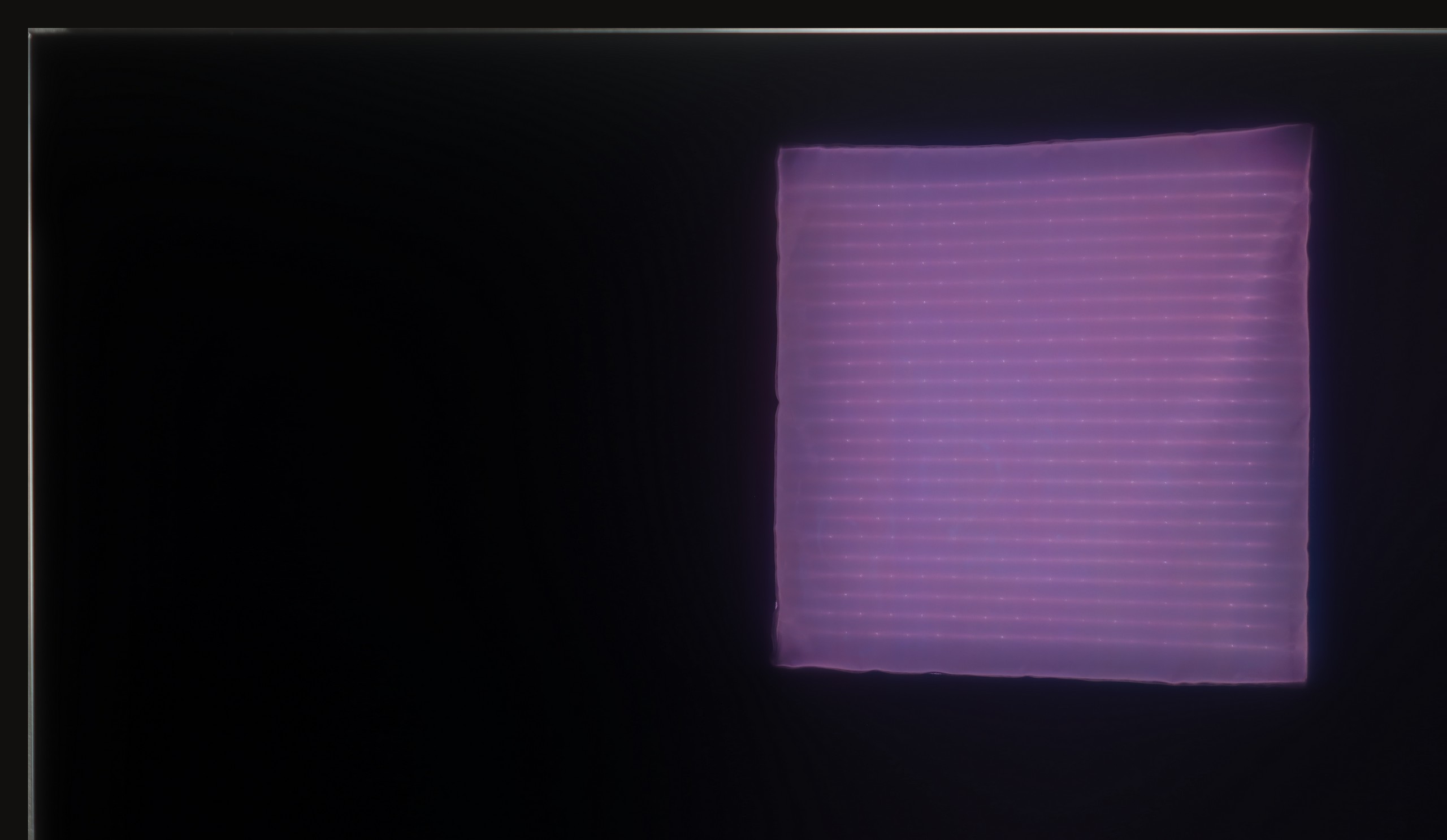


Matrix brightness
Average luminance SDR
LG OLED G5: 810 cd/m2
Samsung OLED S90D / S94D (WRGB OLED): 396 cd/m2
When watching during the day, the Samsung S90D performs very well, achieving an average brightness level of around 400 nits, which is a very good result for OLED technology. Despite the glossy display, the suppression of reflections is at a decent level, allowing for comfortable viewing even in bright rooms. The only noticeable drawback of this technology, rather than the television itself, is the brightness at 100% white screen fill. In such conditions, OLED may struggle to achieve extremely high brightness. Situations like this can be seen when we want to watch winter sports, such as ski jumping.
The LG G5, thanks to its very high brightness, performs excellently in bright rooms. Even with SDR content, the average brightness value is around 800 nits, which is significantly more than in standard televisions. It will handle a bright living room with ease. Although the panel averages moderate reflection suppression, it still maintains significantly better blacks and colours during the day than QD-OLED panels or those with a matte finish. The G5 will perform well in very sunny rooms – unless you truly cannot stand reflections on the screen. In that case, you will need to use blinds or consider purchasing a television with a matte panel.
Details about the matrix
Subpixel Structure:

Panel uniformity and thermal imaging:


TV features
7.4/10
8.5/10
- HDMI inputs0 x HDMI 2.0, 4 x HDMI 2.1 48Gbps0 x HDMI 2.0, 4 x HDMI 2.1 48Gbps
- Other inputsIR (remote)
- OutputsToslink (Optical audio), eARC (HDMI), ARC (HDMI)Toslink (Optical audio), eARC (HDMI), ARC (HDMI)
- Network InterfacesWi-Fi 2.4GHz, Wi-Fi 5GHz, Ethernet (LAN) 100MbpsWi-Fi 2.4GHz, Wi-Fi 5GHz, Ethernet (LAN) 100Mbps
- TV receptionDVB-T, DVB-T2, DVB-S, DVB-S2, DVB-CDVB-T, DVB-T2, DVB-S, DVB-S2, DVB-C
Classic features:
- Recording to USB (terrestrial TV)
- Recording programming
- Picture in Picture (PiP)
- RF remote control (no need to aim at the screen)
- Backlit remote control
- Teletext
- Audio only mode
- Bluetooth headphones support
- Simultaneous Bluetooth headphones & TV audio
Smart features:
- AirPlay
- Screen mirroring (Windows Miracast)
- Voice search
- Voice search in native language
- Ability to connect a keyboard and mouse


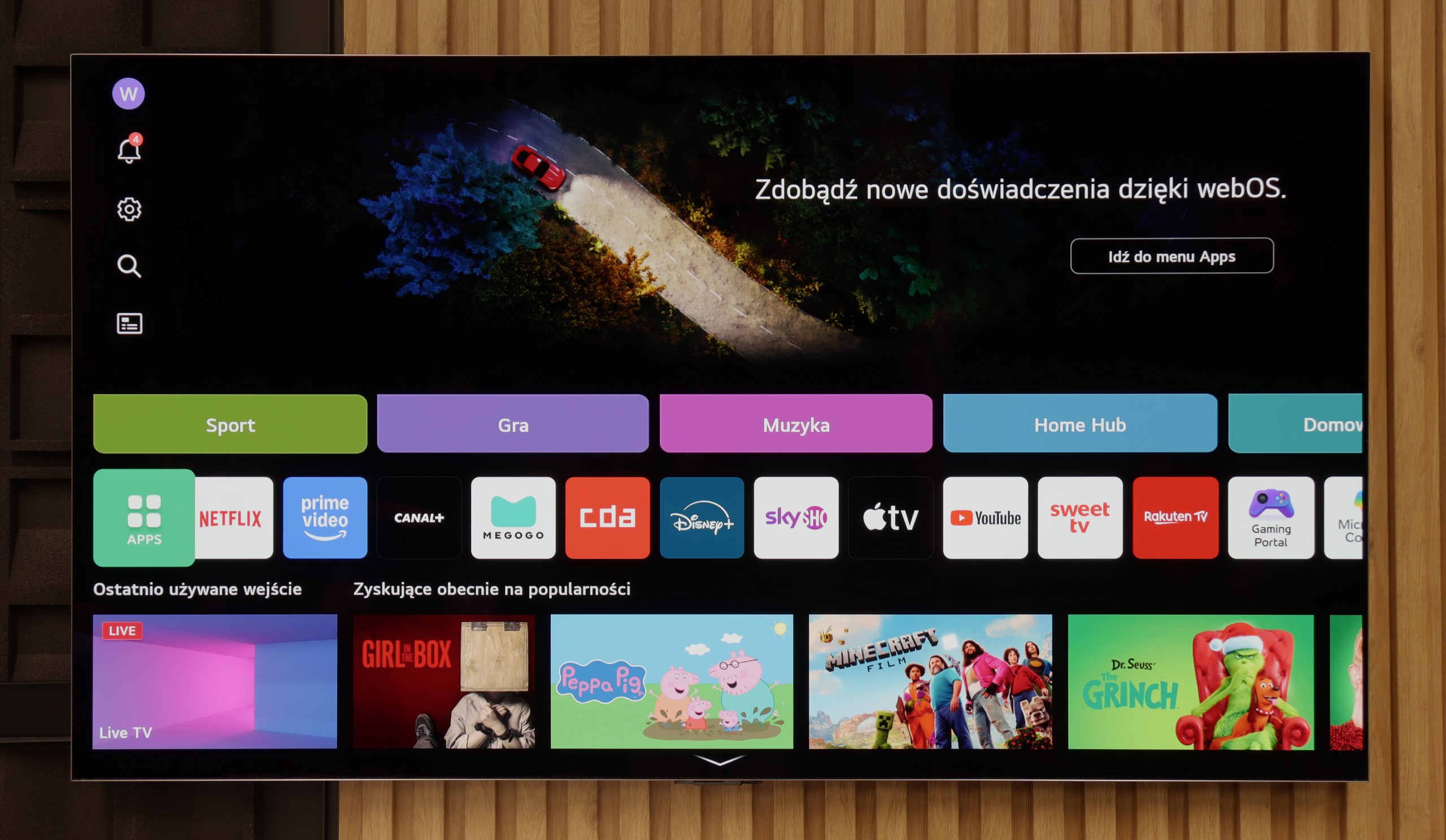
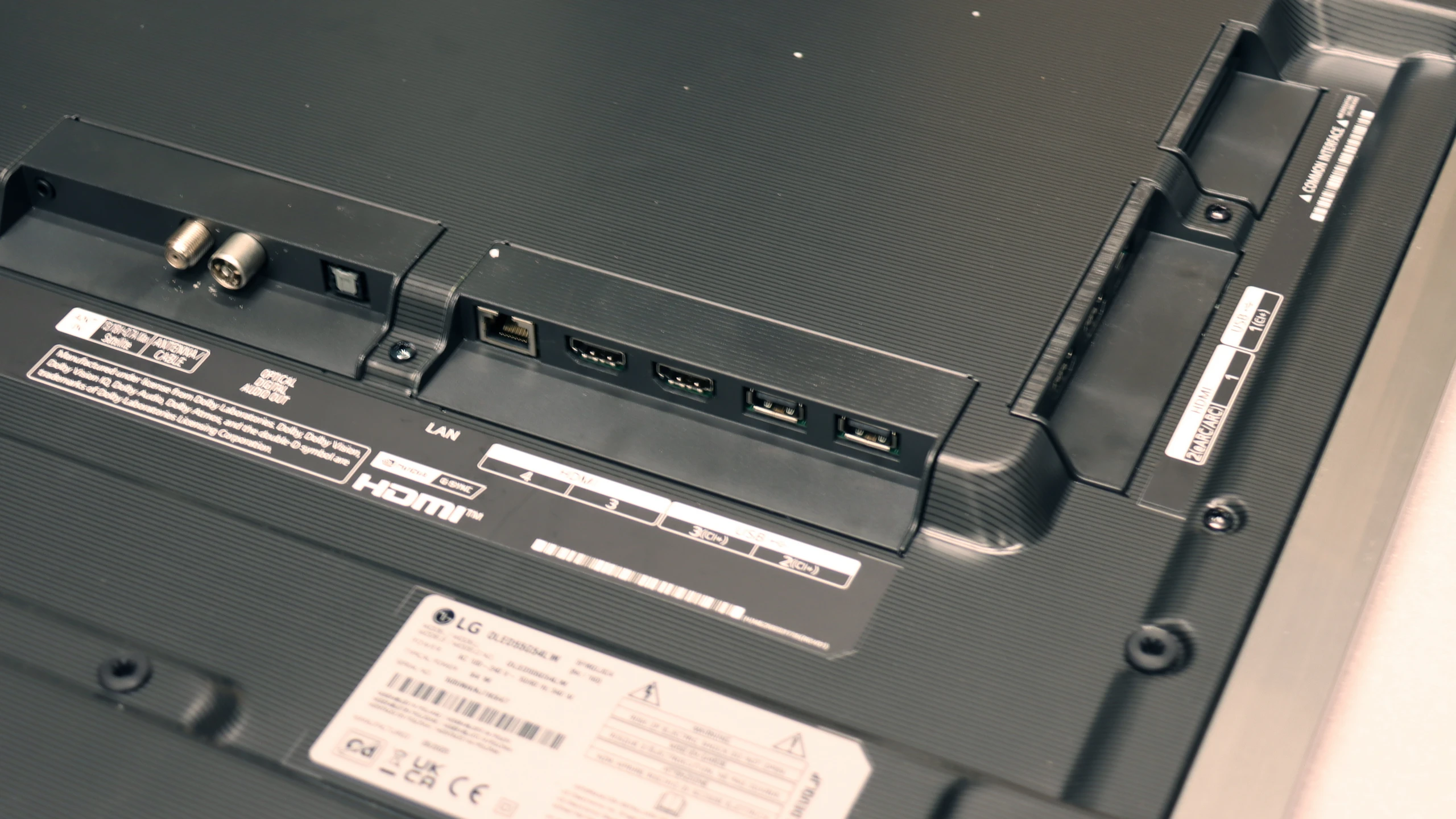
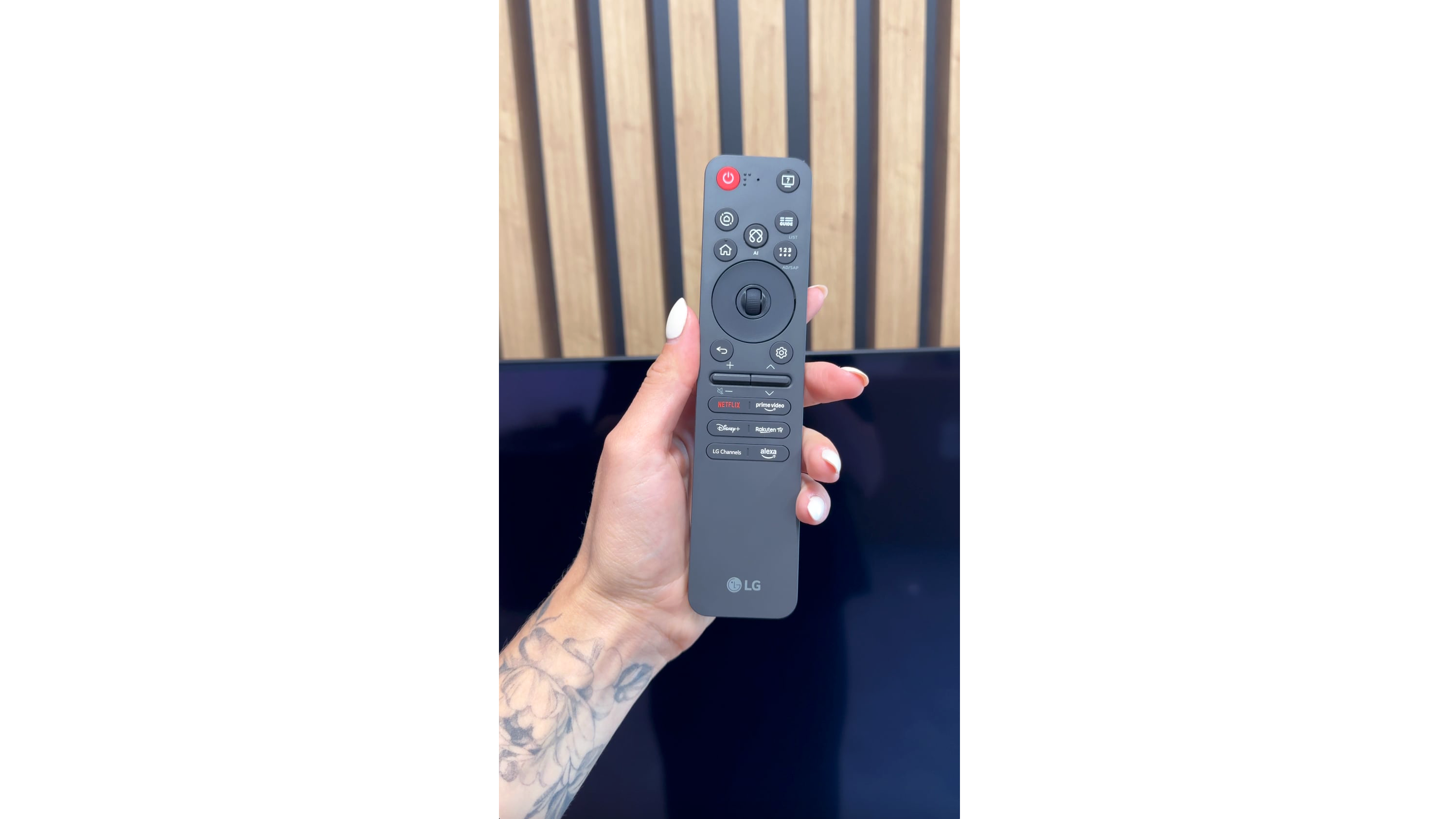
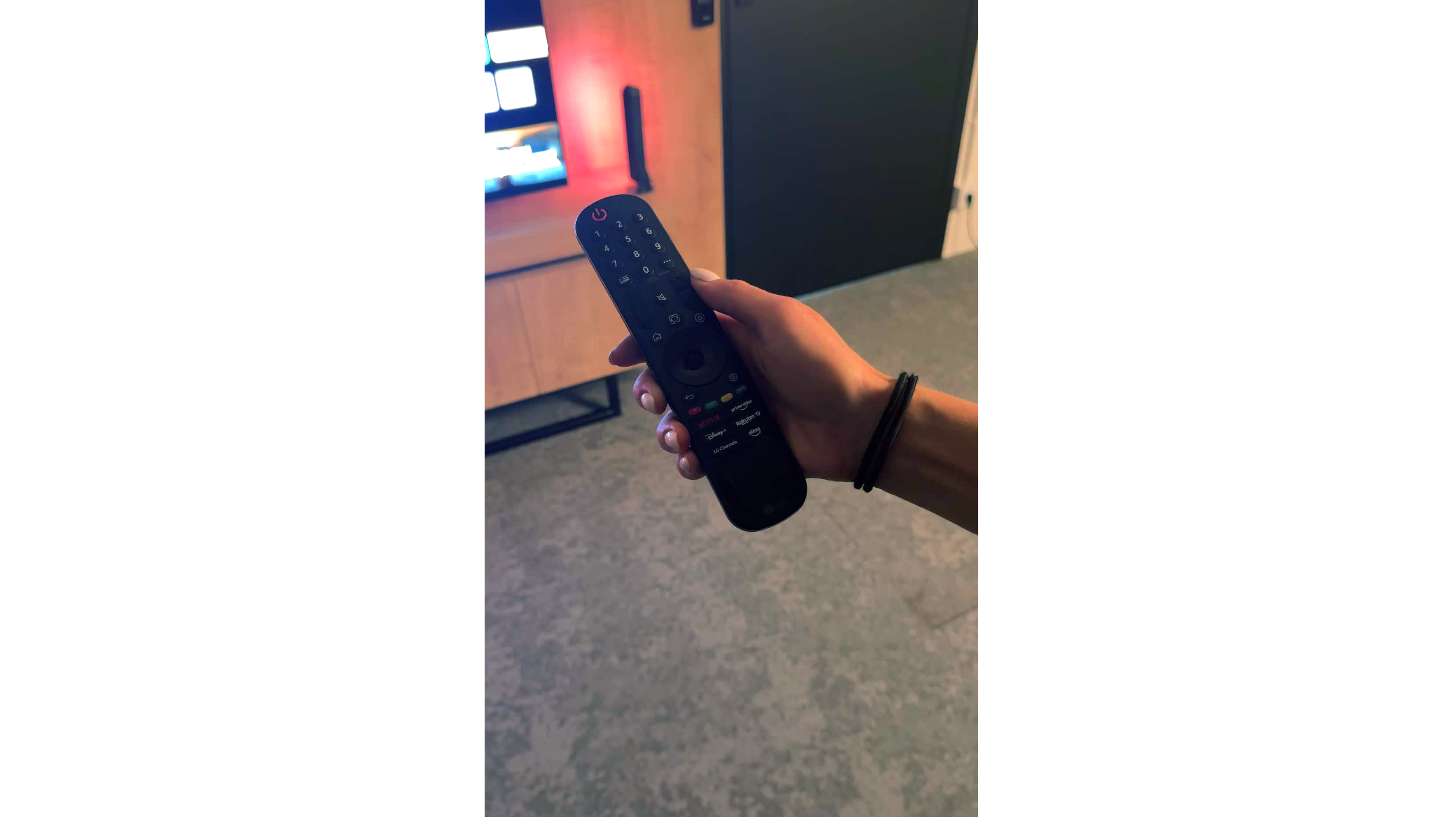
The Samsung S90 television offers a range of features that significantly enhance user comfort and make it an ideal device for home entertainment. The Tizen system, upon which this model is based, is a modern and advanced platform that provides users with an intuitive and smooth experience. Thanks to the user-friendly interface, navigating through applications and settings is quick and intuitive, making it easier for even those less familiar with technology to use the television. Tizen supports a rich set of applications, including all popular streaming services such as Netflix, YouTube, and Amazon Prime Video. A novelty for 2024 is also the availability of voice search in Polish. It's worth noting the eco-friendly solar remote, which is not only environmentally friendly but also practical for everyday use. For example, the remote can control multiple devices connected to the television, which means we don't have to use multiple remotes. Additionally, the television supports AirPlay, allowing easy content sharing from Apple devices such as iPhone or iPad. The S90D Samsung also allows for the connection of various Bluetooth devices, such as mice, keyboards, or headphones, which increases its versatility and enables the personalization of user experiences. Users can easily adjust their settings to make the most of the television's capabilities. The only downside that can be pointed out is the lack of USB recording support. For some users, this may be a limitation, especially when wanting to archive favourite programmes or films. Despite this, the Samsung S90D offers many advanced features and technologies that make it an excellent choice for anyone looking for high-quality entertainment in their home.
Classic features
LG G5 has a lot to offer when it comes to classic television features. Aside from the inability to watch two sources (PIP), the television handles everyday usage excellently. There are no issues connecting external Bluetooth devices, such as headphones, and the EPG interface is very clear and understandable – even for those who are not particularly tech-savvy.
Smart TV Features
The Smart TV in the G5 operates on the WebOS system – it is the heart and brain of the entire television. With the Magic remote, using the G5 is truly enjoyable. We control the cursor on the screen with wrist movements, which somewhat resembles using a mouse in the air. The system itself is highly developed and offers everything one could expect: AirPlay, screen mirroring, voice search, and voice commands – all of this works smoothly and without delays. Without a doubt, it is one of the best operating systems in televisions on the market.
Note:
During our tests, we had virtually nothing to complain about – perhaps with one exception: the confusion surrounding the remote. Depending on the market and the specific version of the model, you may encounter the new, minimalist Magic remote (without a numeric keypad) or the older version with a full set of buttons. We tested the G54LW model, which came with the new Magic remote, but it's hard to say how the situation looks in other variants. It may be a similar situation to the LG C5 series, where the addition of the remote also depends on the specific market.
Playing files from USB
9.1/10
9/10
Supported photo formats:
Maximum photo resolution:

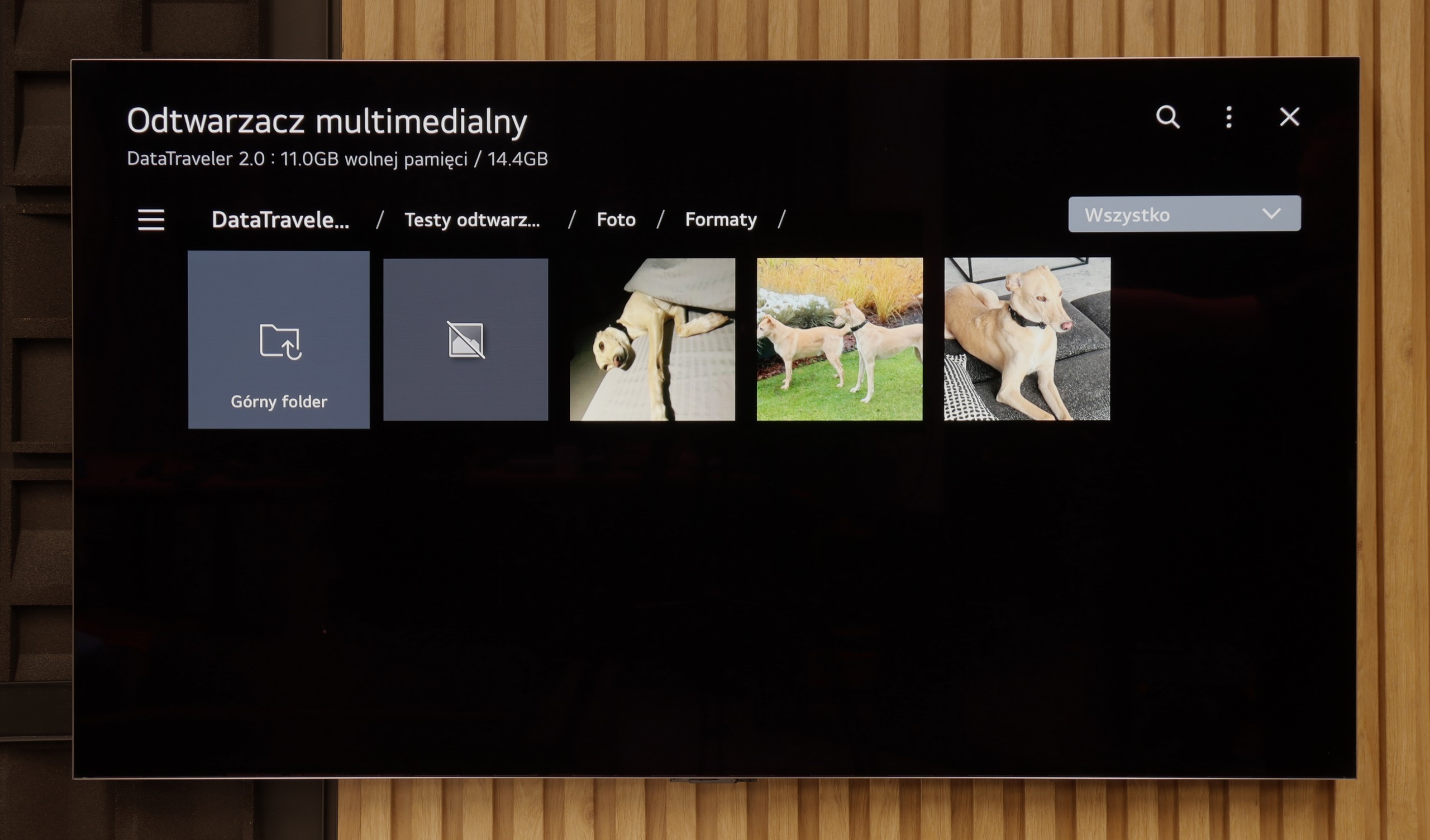
Samsung S90D is equipped with a built-in player that supports most popular video formats, allowing for convenient playback of films from various sources. The player also supports subtitles in Polish and enables users to customise the font colour, increasing comfort while watching content with subtitles. In terms of photo formats, the television handles many of them well, however, one of the few drawbacks is the inability to play the popular PNG format. Nevertheless, the overall file playback capabilities of the S90D are outstanding.
The built-in media player in the LG G5 is really very good. It supports practically everything you might expect from a modern television – most popular formats work without any issues, and the app's performance is swift. Our only disappointment was the lack of support for very high bitrate HEVC 85 Mbit/s files – similar to the C5 and B5 models. Interestingly, the same file played flawlessly on last year's LG OLEDs, so it's hard to say what has caused this change. Nevertheless, in everyday use, the G5 will handle the vast majority of content without the need to connect any external devices for media playback.
Apps
8.7/10
9.1/10














































Sound
7.4/10
8.7/10
- Maximum volume--
- Dolby Digital Plus 7.1
- Dolby True HD 7.1
- Dolby Atmos in Dolby Digital Plus (JOC)
- Dolby Atmos in Dolby True HD
- DTS:X in DTS-HD MA
- DTS-HD Master Audio
The Samsung S90D television is equipped with a 2.1 audio system with a total power of 40 W, providing clear and dynamic sound. Thanks to the subwoofer located at the bottom of the casing, the bass is deep and palpable, while the mid and high tones remain well balanced. It is worth noting that the twin model S94D offers an even more advanced 2.1.2 speaker system with a power of 60 W. If the silver colour of the S94D casing is not a hindrance, and the price difference between these models is minor, it is worth considering the version with the number "4" at the end. Although the television does not support the DTS format, it offers other audio technologies such as Dolby Atmos and Dolby Digital Plus. However, to fully enjoy spatial sound, it is worth considering connecting an external audio system.
The sound on the LG G5, considering its slim profile, is truly phenomenal. When listening to music, one can feel a light, pleasant bass, and in films, the dialogue is clear and audible – it does not get lost even in dynamic scenes. Unfortunately, a certain disappointment is the lack of support for the DTS format, which LG used in its older models. It’s a shame, as many home cinema enthusiasts may feel this as a step backwards.


